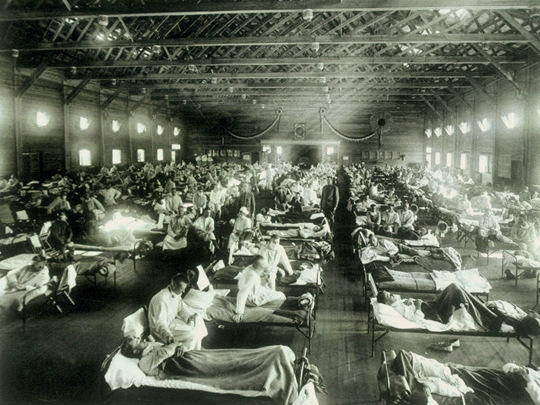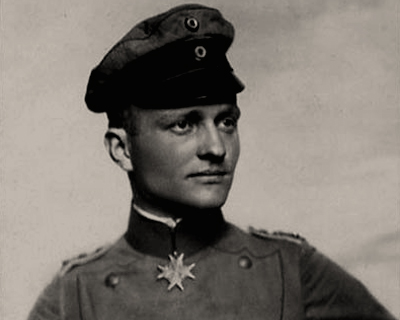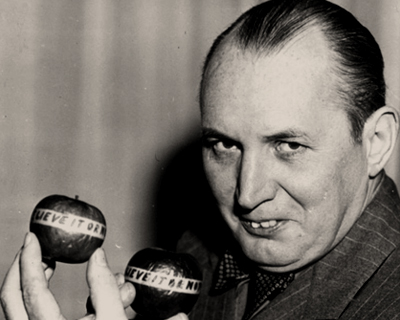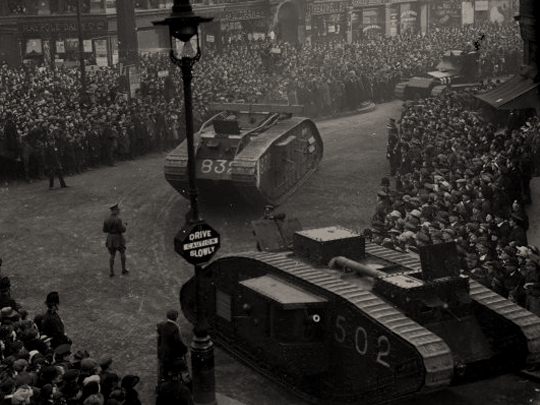National Library NZ on The Commons / Wikimedia Commons / CC-BY-SA-3.0 / GFDL
1 – World War 1 Ends
On 4 November 1918, the Austro-Hungarian empire agreed to an armistice.
One week later, at 5 a.m. on 11 November, Germany signed an armistice agreement with the Allies in a railroad car outside Compiégne, France.
And so, on the 11th hour of the 11th day of the 11th month of 1918, the Great War ended as the armistice came into effect.
It was known as the “war to end all wars”, leaving nine million soldiers dead and 21 million wounded at least five million civilians died from disease, starvation, or exposure.
By the end of the war, the German Empire, the Russian Empire, the Austro-Hungarian Empire, and the Ottoman Empire ceased to exist.
National borders were redrawn, with several independent nations restored or created, and Germany’s colonies were parceled out among the winners.
During the Paris Peace Conference of 1919, Britain, France, the United States, and Italy imposed their terms in a series of treaties.
The League of Nations was formed with the aim of preventing any repetition of such a conflict.
However, the economic depression, renewed European nationalism, and the German feeling of humiliation contributed to the rise of Nazism. These conditions eventually contributed to World War II.
2 – World-wide influenza pandemic strikes

The 1918 flu pandemic (January 1918 – December 1920) was an unusually deadly influenza pandemic, the first of the two pandemics involving H1N1 influenza virus.
It infected 500 million people across the world, and resulted in the deaths of up to 100 million people (3-5% of the world’s population), making it one of the deadliest natural disasters in human history.
Disease had already greatly limited life expectancy in the early twentieth century. A considerable spike occurred at the time of the pandemic, specifically the year 1918. Life expectancy dropped by about 12 years.
Most influenza outbreaks disproportionately kill juvenile, elderly, or already weakened patients. However, the 1918 pandemic predominantly killed previously healthy young adults.
Modern research, using a virus taken from the bodies of frozen victims, has concluded that the virus kills through the overreaction of the body’s immune system (a cytokine storm).
The strong immune reactions of young adults ravaged the body, whereas the weaker immune systems of children and middle-aged adults resulted in fewer deaths among those groups.
3 – The Red Baron, shoots down his 79th and 80th victims marking his final victories before his death

Manfred Albrecht Freiherr von Richthofen, also widely known as the Red Baron, was a German fighter pilot with the Imperial German Army Air Service during the First World War.
He is considered the ace-of-aces of the war, being officially credited with 80 air combat victories.
Originally a cavalryman, Richthofen transferred to the Air Service in 1915, becoming one of the first members of Jasta 2 in 1916.
He quickly distinguished himself as a fighter pilot, and in 1917 became the leader of Jasta 11 and then the larger unit Jagdgeschwader 1.
By 1918, he was regarded as a national hero in Germany and was even respected and admired by his enemies.
Richthofen was shot down and killed near Amiens on 21 April 1918. There has been considerable debate regarding aspects of his career, especially the circumstances of his death.
He remains perhaps the most widely known fighter pilot of all time.
4 – Robert Ripley began his “Believe It or Not” column

In late 1918, on a slow sports day, Robert Ripley put together a cartoon featuring nine small sketches of men performing unique sports feats.
In it, one man had stayed underwater for six and a half minutes, another had walked backward across the North American continent.
He entitled the cartoon, ‘Champs and Chumps’, and a year later created a similar cartoon, this time changing the title to Believe It or Not.
Ripley’s cartoon series was estimated to have 80 million readers worldwide, and it was said that he received more mail than the President of the United States.
Ripley claimed to be able to prove every statement he made because he worked with professional fact researcher Norbert Pearlroth, who assembled the cartoon’s multitude of odd facts.
Pearlroth spent 52 years as the feature’s researcher.









